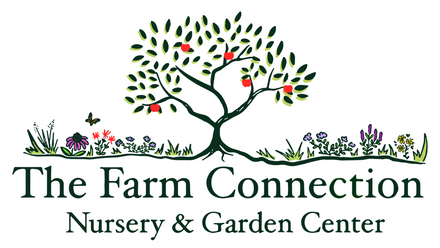Redbud, Merlot, Bare Root
Glossy Purple Leaves + Early Pollinator Blooms
Redbud, Merlot, Bare Root - Bare Root / 5-6' / Standard Rootstock is backordered and will ship as soon as it is back in stock.
Couldn't load pickup availability
Delivery and Shipping
Delivery and Shipping
Make sure to thoroughly review our entire "Shipping, Returns, Refunds, and Our Guarantee" page for all relevant details about ordering from our store.
Making a purchase from our store constitutes an agreement to all the conditions outlined in those policies.
We appreciate your support and look forward to being your favorite plant provider!
Redbud, Merlot (Cercis canadensis 'Merlot')
Merlot Redbud is a compact, drought-tolerant cultivar of the native Eastern Redbud, bred for glossy, deep purple foliage and vivid magenta-pink spring flowers. A hybrid between Cercis canadensis and the Texas Redbud (Cercis canadensis var. texensis), Merlot combines the cold hardiness of Eastern Redbud with the heat tolerance and thicker leaves of its southwestern relative. It's a brilliant small tree for edible landscapes, pollinator gardens, and native-inspired designs, offering ornamental value across multiple seasons.
Key Characteristics
-
Magenta-Pink Flowers for Early Pollinators
In March to April, Merlot Redbud bursts into bloom with small, vibrant, pea-like flowers directly on bare branches (a trait called cauliflory). These blooms feed native bees, bumblebees, and early-season pollinators, offering a critical nectar source before most plants leaf out. -
Glossy Purple Foliage with a Compact Form
After flowering, Merlot leaf's out with rich, burgundy-purple, heart-shaped leaves that mature to a deep wine color and hold through summer. The leaves are thicker and glossier than typical redbuds, with better heat and drought resistance, and the tree grows to a compact 12-15 feet perfect for smaller gardens or layered native plantings. -
Edible Flowers and Historical Uses
Like other redbuds, the flowers are edible and can be used in salads or pickled. Native peoples also used parts of the tree for dye and traditional medicines. While Merlot is bred for landscape use, it retains the ecological and ethnobotanical qualities of its wild ancestors. -
Drought Tolerant and Low Maintenance
Thanks to its Texas Redbud parentage, Merlot is more drought and heat tolerant than most Eastern Redbuds. It thrives in well-drained, medium-dry to medium soils and needs little pruning or care once established. -
Outstanding for Native Gardens and Permaculture Landscapes
With its modest size, deep color, and spring nectar value, Merlot fits beautifully into pollinator gardens, understory layers, woodland edges, and food forests. Its multi-season interest and ecological function make it an ideal small tree for regenerative landscapes.
Product Details
- Native Range: Cultivar; hybrid of Cercis canadensis — Cercis canadensis var. texensis
- Plant Life Cycle: Deciduous small tree
- Sun Requirements: Full sun to part shade
- Soil Requirements: Medium-dry to medium
- Mature Height: 12-15 feet
- Bloom Time: March-April
- Bloom Color: Magenta-pink
- USDA Hardiness Zones: 5-9
Merlot Redbud brings together bold foliage, early-season pollinator support, and compact size-all in one resilient, beautiful tree. It's an excellent addition to any native plant garden, orchard edge, or layered permaculture design.
-
Sun RequirementsFull Sun, Part Sun/Shade
-
Soil RequirementsMedium-Dry, Medium
-
Bloom ColorPink
-
Bloom TimeMarch, April
-
USDA Hardiness ZonesZone 5, Zone 6, Zone 7, Zone 8, Zone 9+
Payment & Security
Payment methods
Your payment information is processed securely. We do not store credit card details nor have access to your credit card information.




